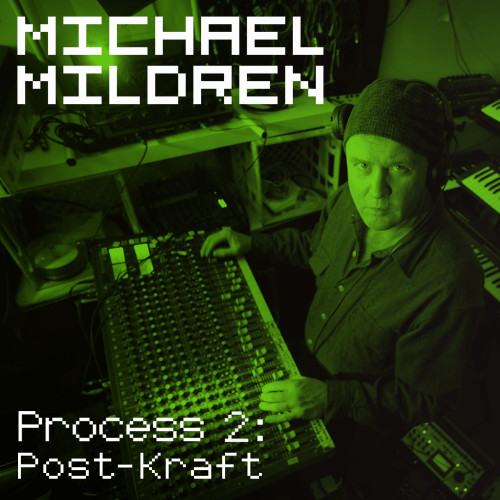With the first release in Michael Mildren’s Process series, Studies In Kraft (CA049A) Michael recreated a selection of classic Kraftwerk tracks using period electronic music gear and painstaking study of the composition, performance and production techniques of the German electronic music masters. When Michael commenced work on the second release in the Process series, Post-Kraft (CA049B), he applied what he had learned from Kraftwerk to his own original tracks.
Here are a selection of Michael’s tips, gleaned from his intensive study of Kraftwerk, with some details on how he implemented this in his own work:
• Pay attention to detail…
• Don’t leave unnecessary notes or unnecessary sound artefacts in the track.
• Less can be better than more, especially where drum tracks are concerned
• Be careful not to make drum patterns too busy.
• Pay attention to frequency ranges across the multi-tracks, making sure bass notes and sounds are clearly heard and avoiding muddy low-mids.
• Use compression sparingly.
• Kraftwerk were good at using timed delay to give the impression of more notes being played eg in ‘Computer World’, where the bass line is more effective because it is an 8th note rhythm with one delay that makes it seem like a 16th. I used this in ‘Find Your Here’ after I’d found that the bass line seemed too busy and aurally tiring after a while with constant 16th notes.
• Finish a song before starting a new one (within reason, and always revisiting)
• The function of mastering a track is for clarity and suitable volume.
How did Michael implement these ideas in his original tracks?
‘Levels’ was the first piece I made straight after Studies in Kraft. I had amassed a new collection of analogue equipment (still expanding and contracting with purchases and sales). I wanted to make a long piece that traced the concept of music from basic sound (white and pink noise, non-melodic sound fx and spacey filtered feedback) through drone music (two-note drone chord with simple repetitive melody) and finally polyrhythmic music with more complex harmonies and melodies. I used my EHX small stone phaser on the strings in part two. I’d bought this phaser for the organ sound in ‘Autobahn’ on Studies in Kraft.
I’d made a computer software version of ‘GeoEngineering’ some years ago but it was overblown and way too loud. I used a more paired-back approach, guided by what I’d learned from songs like ‘Computer World’ and ‘Europe Endless’.
‘Satellite in the Sky’ was clearly referencing the structure and style of ‘Radioactivity’. Again, I was adding to my synth collection, so used a Waldorf Rocket as well as my Korg Poly 800.
‘This is an Emergency’ was made late at night after a session on ‘Levels’, starting as an improv on ELGAM Electric Piano/Harpsichord/Spinnet through Small Stone and Roland analog echo DC30. I wanted to create a traditional French style song with preset clarinet sound from my 1973 Roland SH1000, plus vocals by French sound module on the Texas Instruments Language Tutor which I’d bought on eBay for ‘Computer World’. To balance and counter the preset melody, I used the SH1000 pink noise as another ‘melodic’ part, and finally added a deep bass note from the same synth.
Process 1: Studies in Kraft and Process 2: Post-Kraft are out now from Clan Analogue. Look out for Process 3, to be released shortly.


